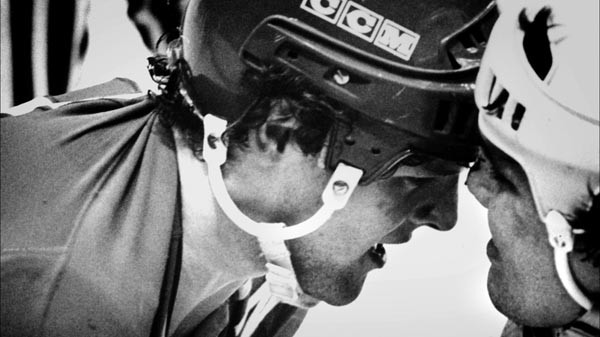"I have small hands," says Chris "Knuckles" Nilan, professional hockey brawler. He shows them to the camera, pointing out where they've been broken, cut, bitten.
Today, his scarred hands are just one part of Nilan's damaged life. His story — the rise and fall of the legendary Montreal Canadiens enforcer — is the subject of Alex Gibney's documentary, The Last Gladiators.
Now in his mid-50s, Nilan narrates his life story — from his Boston youth through his 13-year rough-and-tumble NHL career to his equally tumultuous post-ice life, marked by divorce, depression and drug addiction. Other contributing voices include teammates, family members and sports writers.
Nilan spent his glory years in the 1980s as the pugilistic darling of the Canadiens. The film sketches in the creation of hockey enforcers, an era of sanctioned violence that began in earnest in the 1970s. The enforcer was a "necessary" team component: an aggressive bruiser who would protect star players from the other team's attacks, and be a source of team pride. Few games were complete without a match-up of rival enforcers, bouts underscored with roaring crowds and gleeful announcers. Nilan relished his role as an enforcer, racking up a record-setting career total of more than 3,000 penalty minutes.
But things began to fall apart for Nilan in the late '80s. There were injuries and trades that didn't work out. He retired in 1992, and post-hockey, he floundered badly. Athletes making uneasy transitions to post-game life are common, but Nilan seemed to struggle especially because of his enforcer role: He had been a protector; he was needed. But off-ice, a guy who beats up people isn't a hero.
While Gibney is known for his muckraking docs (Enron, Taxi to the Dark Side), Gladiators resists wading too deeply into the growing concern about curtailing the violence institutionalized in sports such as hockey and football. But the tight focus on Nilan still provides plenty of sobering material. The NHL paid him to fight and the fans loved it — until Nilan was broken down and useless.
Our love of violent spectacle isn't new (hence the "Gladiator" title), and perhaps it is an unquenchable aspect of human nature. Even Nilan understands that part of his appeal was as a stand-in for spectators who couldn't punch someone themselves. But increasingly, there's no escaping the knowledge of the physical and emotional costs to those who wage such sports "battles" for our vicarious entertainment. Gibney's film — and Nilan's story — is another clear-eyed and potent reminder of our complicity in a barbarism that we dismiss as simply "part of the game."















